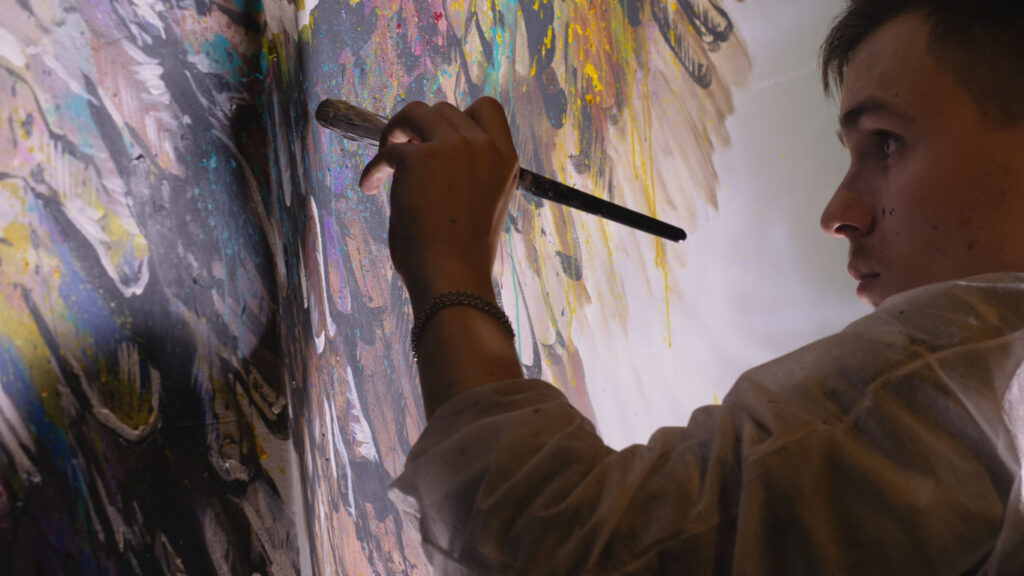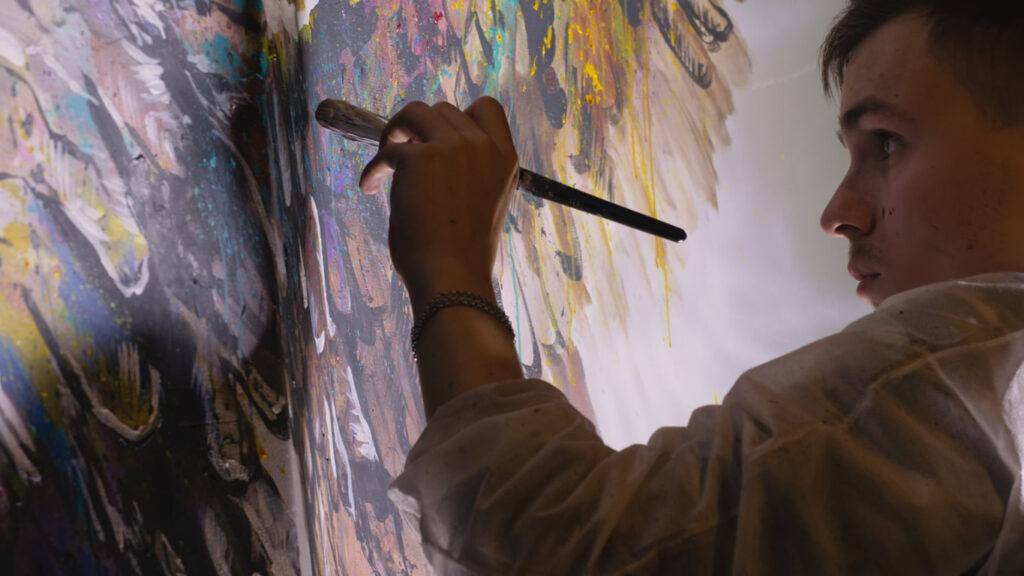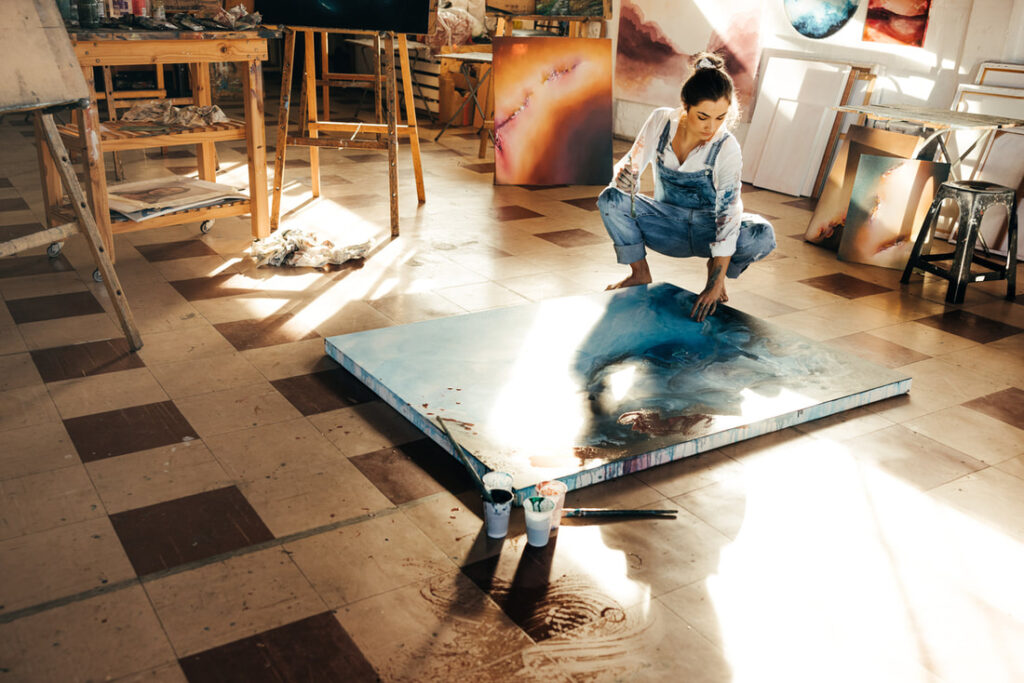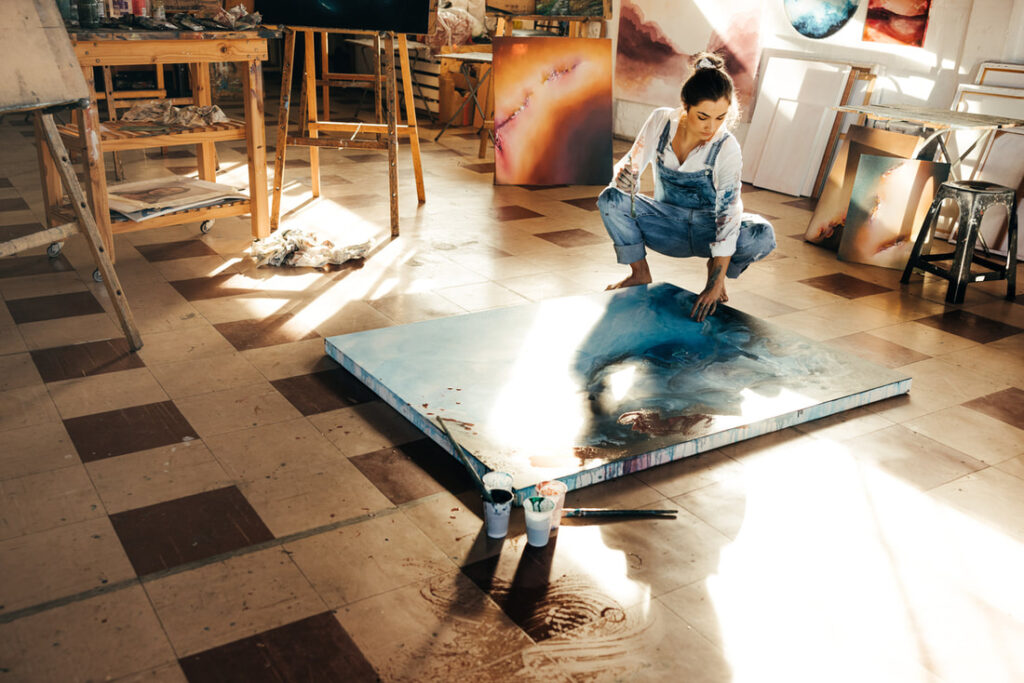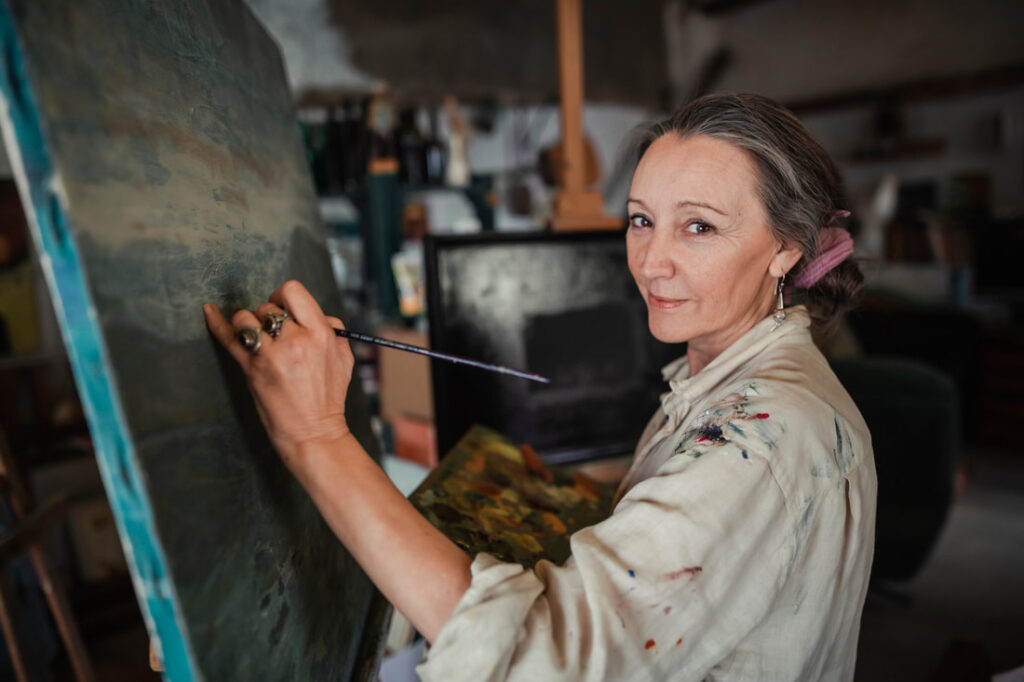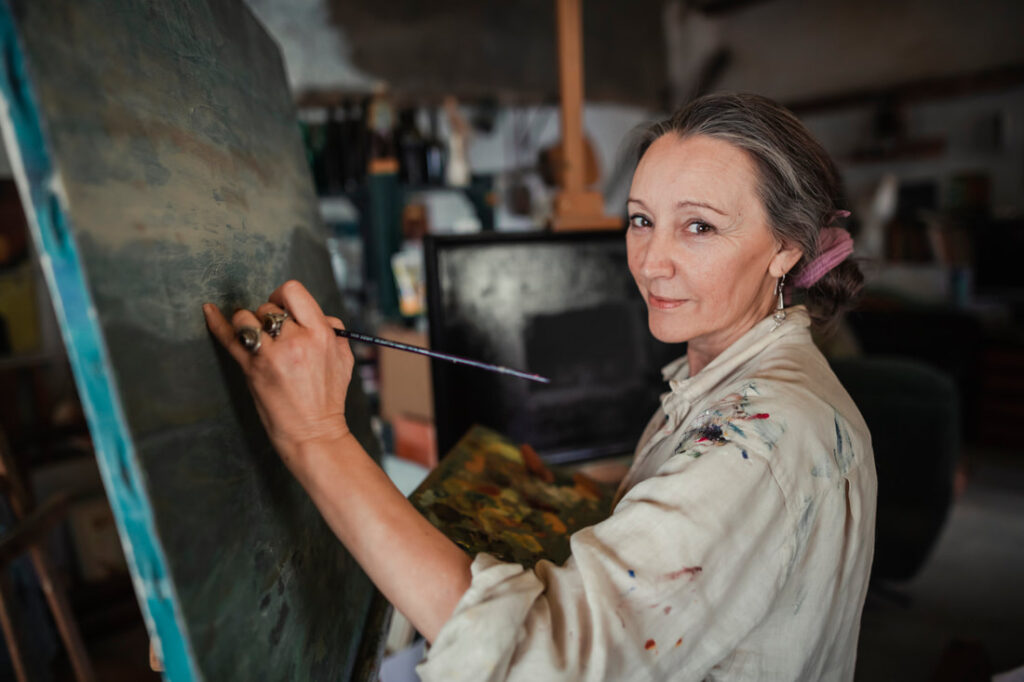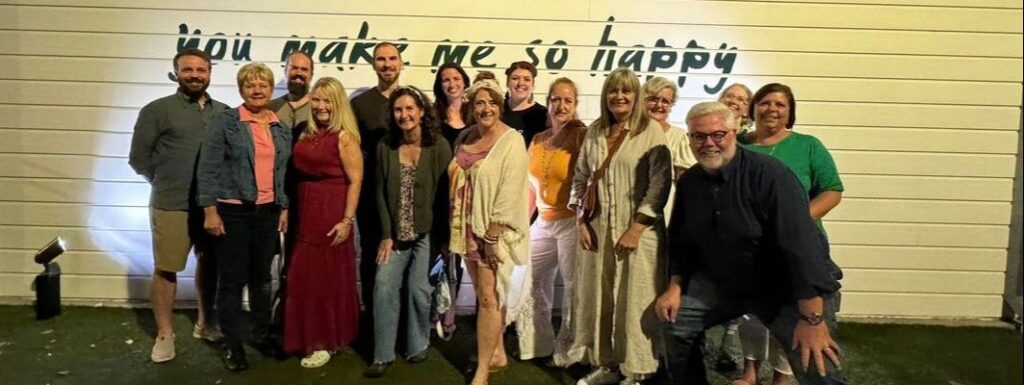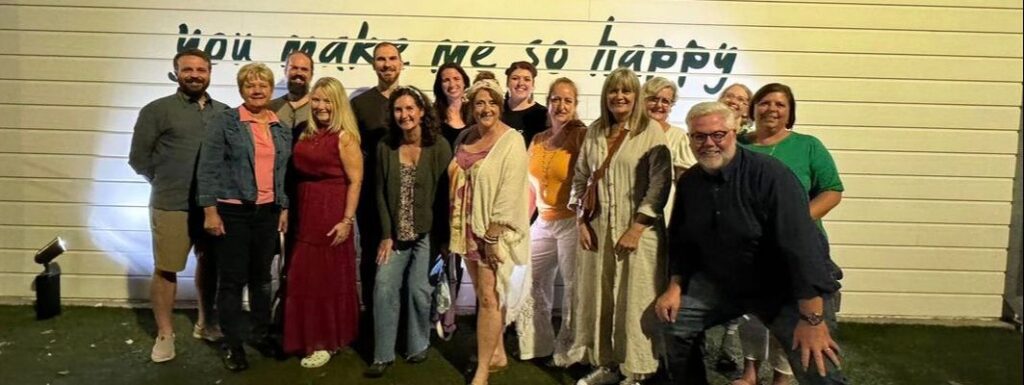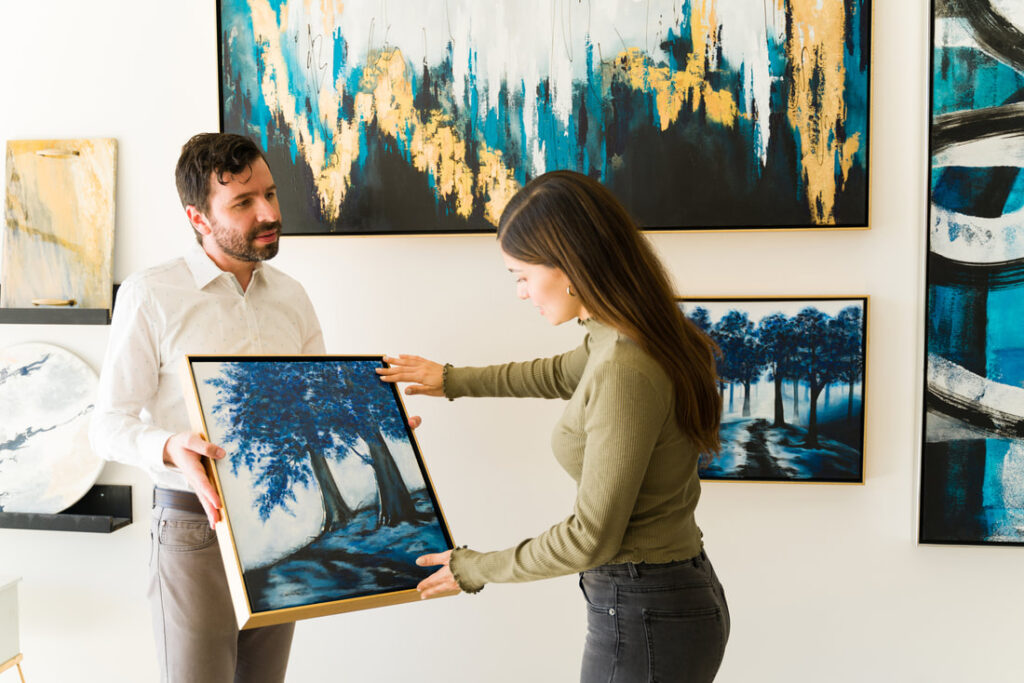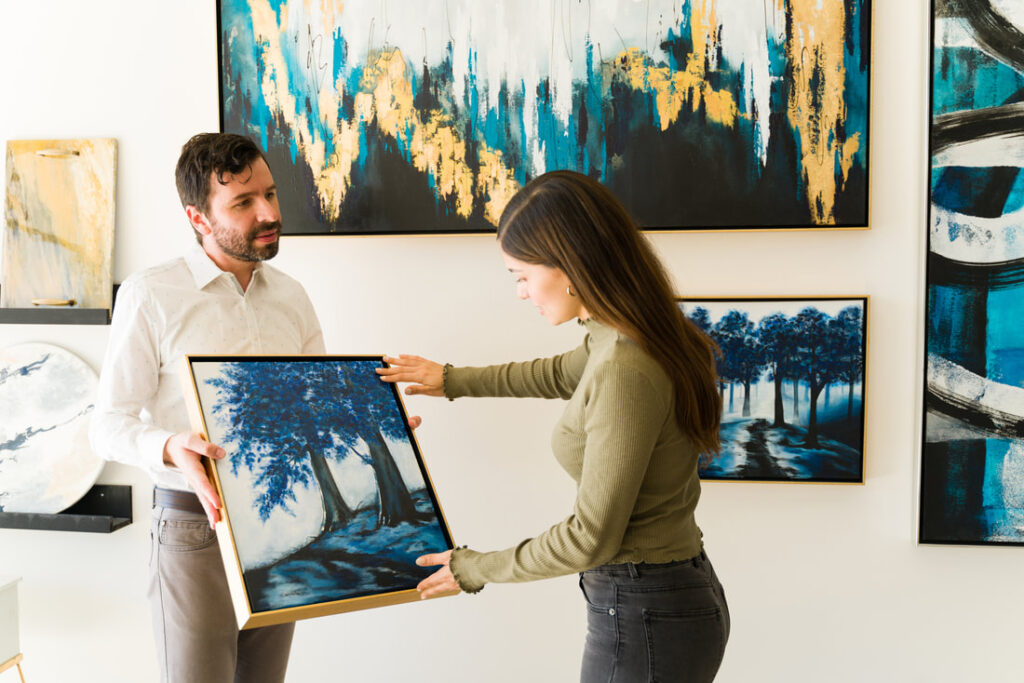Artists in the Created to Thrive Artist Mastery Program.
As a Christian visual artist, the desire to turn your art hobby or ministry into a thriving business is a calling worth pursuing. It’s a journey that requires dedication, persistence, and above all, faith in God’s plan for your life. The secret to success lies in three foundational principles: showing up daily, working faithfully, and trusting completely. These principles are deeply rooted in the teachings of Jesus, particularly in the parable found in Matthew 25:21 (NKJV), where He says, “Well done, good and faithful servant; you were faithful over a few things, I will make you ruler over many things. Enter into the joy of your lord.”
Show Up Daily: The Power of Consistency
The first secret to becoming a successful artist is to show up daily. The healthiest artists and art businesses are not built overnight. They are cultivated over time, little by little, as you faithfully steward what God has entrusted to you.
Creating a habit of daily studio time is essential. Dedicate a specific space in your home or elsewhere where you can create without distractions. This space becomes a sanctuary where you can connect with God and let your creativity flow. In Psalm 90:17 (NKJV), we find a powerful prayer: “And let the beauty of the Lord our God be upon us, and establish the work of our hands for us; yes, establish the work of our hands.” By showing up in your studio daily, you invite God to establish the work of your hands, transforming your efforts into something beautiful and enduring.
Consistency in creating art is vital. It not only increases your skill but also helps you discover your unique voice as an artist. As you show up each day, you may not always feel inspired or produce your best work, but the discipline of daily creation will yield fruit over time. Galatians 6:9 (NKJV) encourages us, “And let us not grow weary while doing good, for in due season we shall reap if we do not lose heart.” Keep showing up, even when it’s tough, knowing that your faithfulness will eventually lead to a harvest.
Work Faithfully: Stewarding What You’ve Been Given
The second secret is to work faithfully with what you’ve been given. In the parable of the talents in Matthew 25:14-30, Jesus teaches us the importance of being faithful stewards. The servants who invested and multiplied their talents were praised and rewarded, while the one who buried his talent out of fear was rebuked.
As artists, we are given unique gifts and talents by God. It’s our responsibility to develop these gifts, honing our skills and expanding our capacity. This process requires hard work, dedication, and a commitment to excellence. Colossians 3:23-24 (NKJV) reminds us, “And whatever you do, do it heartily, as to the Lord and not to men, knowing that from the Lord you will receive the reward of the inheritance; for you serve the Lord Christ.” When you work with all your heart, as unto the Lord, you are faithfully stewarding your gifts.
Working faithfully also means being diligent in the business side of your art. This includes setting goals, marketing your work, managing finances, and building relationships with collectors and clients. Proverbs 16:3 (NKJV) advises, “Commit your works to the Lord, and your thoughts will be established.” As you commit your art business to the Lord and work faithfully, He will guide your steps and establish your plans.
Trust Completely: Surrendering the Results to God
The third secret is to trust completely in God with the results of your work. This is perhaps the most challenging aspect of the journey because it requires surrendering control and placing your faith in God’s timing and provision.
In the parable of the loaves and fishes (John 6:1-14), we see a powerful example of trust and multiplication. A young boy brought what little he had—five loaves and two fish—and placed it in Jesus’ hands. Jesus blessed it, and it multiplied to feed thousands, with leftovers to spare. As artists, we must bring our “loaves and fishes”—our creativity, our efforts, our resources—and trust that God will multiply them. Not only will He use our work to bless others, but He will also ensure that we have more than enough for our own lives.
Proverbs 3:5-6 (NKJV) offers wisdom in this area: “Trust in the Lord with all your heart, and lean not on your own understanding; in all your ways acknowledge Him, and He shall direct your paths.” Trusting God means acknowledging that He is the source of your success and that His plans are far greater than anything you could imagine. When you trust completely, you release the pressure of trying to control the outcomes, and you allow God to work in ways that exceed your expectations.
Applying the Principles: Practical Steps
Now that we’ve explored the three secrets to becoming a successful artist—showing up daily, working faithfully, and trusting completely—let’s discuss some practical steps to apply these principles in your art business.
1. Establish a Daily Routine
Create a daily routine that includes dedicated studio time. Set aside a specific time each day to create, even if it’s only for a short period. Consistency is more important than the amount of time spent. Over time, this habit will lead to significant growth in your skills and creativity.
2. Set Clear Goals
Set clear, measurable goals for your art business. These could include the number of pieces you want to create each month, financial targets, or marketing strategies. Break these goals down into actionable steps and review your progress regularly. Remember to commit your plans to the Lord and seek His guidance in all you do.
3. Cultivate a Heart of Gratitude
Cultivate a heart of gratitude for the opportunities and resources God has provided. Gratitude keeps you focused on God’s goodness and reminds you that every success is a result of His grace. Philippians 4:6-7 (NKJV) encourages us, “Be anxious for nothing, but in everything by prayer and supplication, with thanksgiving, let your requests be made known to God; and the peace of God, which surpasses all understanding, will guard your hearts and minds through Christ Jesus.”
4. Build a Support Network
Surround yourself with other Christian artists who share your values and vision. A supportive community can provide encouragement, accountability, and inspiration. Hebrews 10:24-25 (NKJV) says, “And let us consider one another in order to stir up love and good works, not forsaking the assembling of ourselves together, as is the manner of some, but exhorting one another, and so much the more as you see the Day approaching.” Being part of a community helps you stay motivated and focused on your calling.
5. Trust the Process
Finally, trust the process and God’s timing. Success in the art world often takes time, and there may be seasons of waiting or slow growth. During these times, continue to show up, work faithfully, and trust that God is at work behind the scenes. Isaiah 40:31 (NKJV) offers encouragement: “But those who wait on the Lord shall renew their strength; they shall mount up with wings like eagles, they shall run and not be weary, they shall walk and not faint.” Trust that as you remain faithful, God will bring about His perfect plan for your life and art business.
6. Find an Art Mentor
One of the most impactful steps you can take in your journey as an artist is to find a mentor who can guide you, encourage you, and help you navigate the challenges of growing your art business. A mentor provides valuable insights, shares their experiences, and offers support when you need it most. Proverbs 15:22 (NKJV) says, “Without counsel, plans go awry, but in the multitude of counselors they are established.” Having a mentor can make a significant difference in your growth as an artist.
If you’re looking for a Christ-centered mentoring community, consider becoming a part of the Created to Thrive Artist Mentoring Program. This program is designed specifically for Christian visual artists who want to turn their passion for art into a thriving business. Through a combination of teaching, community support, and personal guidance, Created to Thrive helps artists like you develop the skills, mindset, and spiritual foundation needed to succeed.
By joining this mentoring program, you’ll have access to a wealth of resources, including a one-year curriculum with on-demand training videos, weekly live Q&A sessions, bi-monthly small group discussions, Expert Hour sessions with industry experts in website design, marketing, email, social media, art critiques and more. You’ll also be part of a community of like-minded artists who share your faith and commitment to excellence. Together, you’ll grow in your artistic abilities, deepen your spiritual walk, and learn how to navigate the complexities of the art world with confidence.
Remember, you don’t have to walk this journey alone. With the guidance of a mentor and the support of a community, you can achieve your God-given potential as an artist. If you’re ready to take your art business to the next level, consider joining the Created to Thrive Artist Mentoring Program and start thriving today.
Becoming a successful artist is a journey of faith, discipline, and trust. By showing up daily, working faithfully, and trusting completely in God, you are positioning yourself to receive the fullness of His blessings. Remember the words of Jesus in Matthew 25:21 (NKJV): “Well done, good and faithful servant; you were faithful over a few things, I will make you ruler over many things.” As you are faithful with what God has given you, He will expand your influence, bless your efforts, and use your art to impact the world for His glory.








